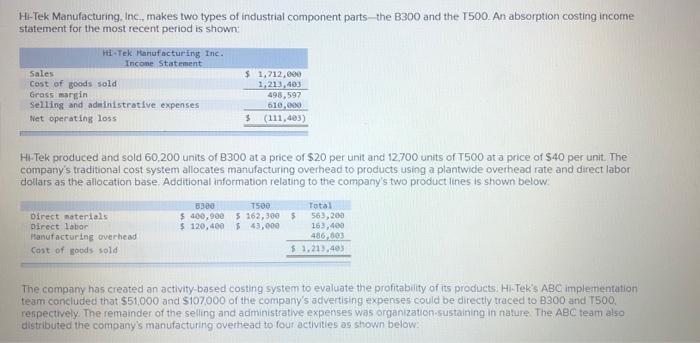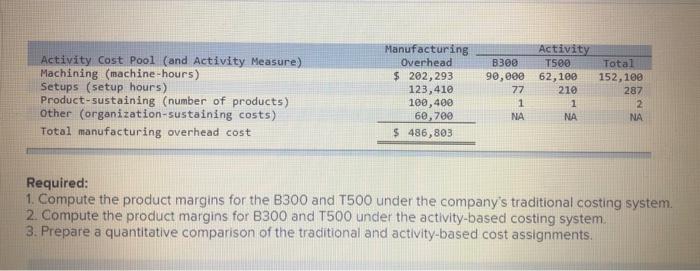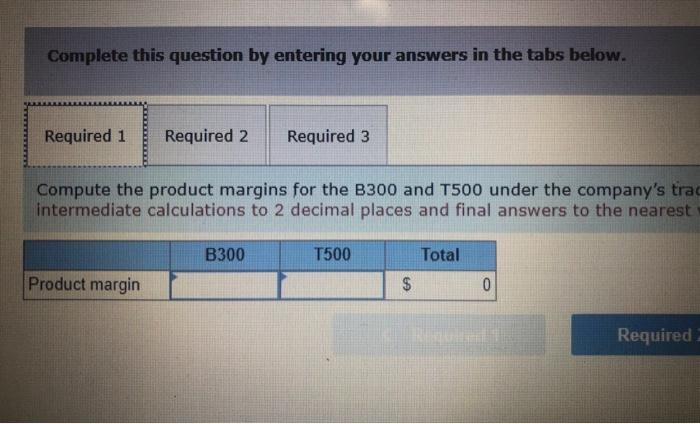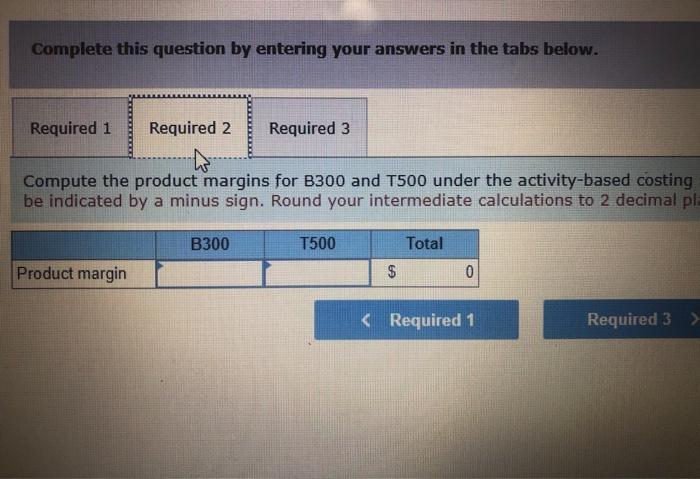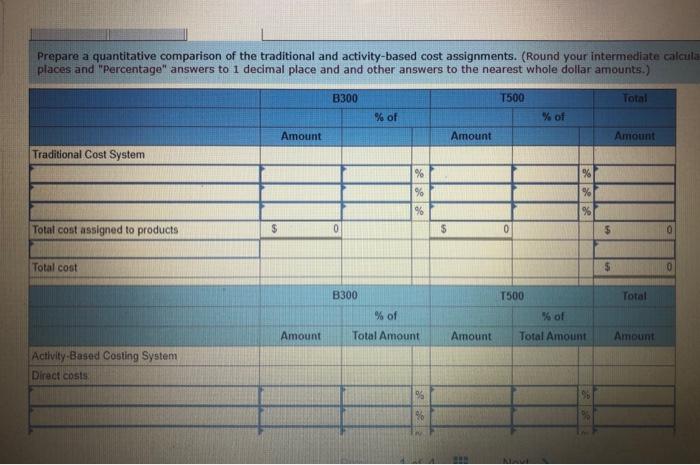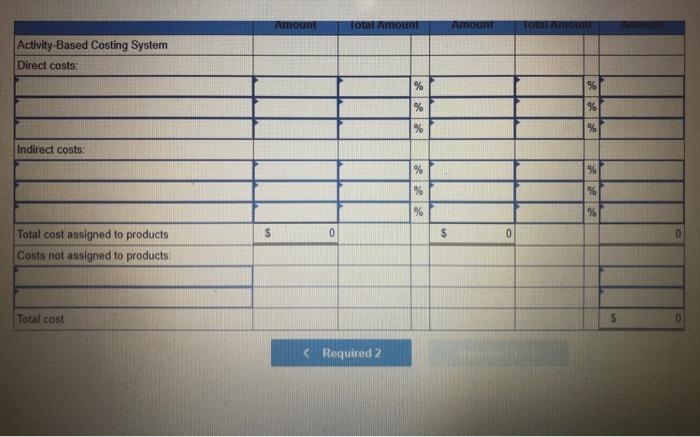Hi-Tek Manufacturing, Inc., makes two types of industrial component partsthe 8300 and the 1500. An absorption costing income statement for the most recent period is shown: Tek Hanufacturing Inc. Income Statement Sales $ 1,712,600 Cost of goods sold 1,212, 403 Gross margin 498,597 Selling and administrative expenses 610.000 Net operating loss $ (111,403) H-Tek produced and sold 60,200 units of B300 at a price of $20 per unit and 12,700 units of T500 at a price of $40 per unit. The company's traditional cost system allocates manufacturing overhead to products using a plantwide overhead rate and direct labor dollars as the allocation base. Additional information relating to the company's two product lines is shown below Direct materials Direct labor Manufacturing overhead Cost of goods sold 6300 TSD Total $ 400,98 5 162,300 $ 563,200 $ 120,400 543,000 163,400 486,803 $1,215,43 The company has created an activity based costing system to evaluate the profitability of its products. Hi-Tek's ABC implementation team concluded that $51,000 and $107.000 of the company's advertising expenses could be directly traced to B300 and T500, respectively. The remainder of the selling and administrative expenses was organization-sustaining in nature. The ABC team also distributed the company's manufacturing overhead to four activities as shown below: Activity Cost Pool (and Activity Measure) Machining (machine-hours) Setups (setup hours) Product-sustaining (number of products) Other (organization-sustaining costs) Total manufacturing overhead cost Manufacturing Overhead $ 202,293 123,410 100,400 60,700 $ 486,803 B300 90,000 77 1 Activity T500 Total 62,100 152, 100 210 287 1 2 NA NA NA Required: 1. Compute the product margins for the B300 and T500 under the company's traditional costing system. 2. Compute the product margins for B300 and T500 under the activity-based costing system Prepare a quantitative comparison of the traditional and activity-based cost assignments. Complete this question by entering your answers in the tabs below. Required 1 Required 2 Required 3 Compute the product margins for the B300 and T500 under the company's tra intermediate calculations to 2 decimal places and final answers to the nearest B300 T500 Total $ Product margin 0 Required Complete this question by entering your answers in the tabs below. Required 1 Required 2 Required 3 Compute the product margins for B300 and T500 under the activity-based costing be indicated by a minus sign. Round your intermediate calculations to 2 decimal pl B300 T500 Total Product margin $ 0 Prepare a quantitative comparison of the traditional and activity-based cost assignments. (Round your intermediate calcula places and "Percentage" answers to 1 decimal place and and other answers to the nearest whole dollar amounts.) B300 T500 Total % of % of Amount Amount Amount Traditional Cost System % % % % % % Total cost assigned to products $ $ 0 $ Total cost 5 0 B300 T500 Total % of % of Amount Total Amount Amount Total Amount Amount Activity-Based Costing System Direct costs 20 Amount Tot Amount AMOUNT Total amount Am Activity-Based Costing System Direct costs % % % % % Indirect costs % % % % % se $ 0 $ 0 Total cost assigned to products Costs not assigned to products Total cost
